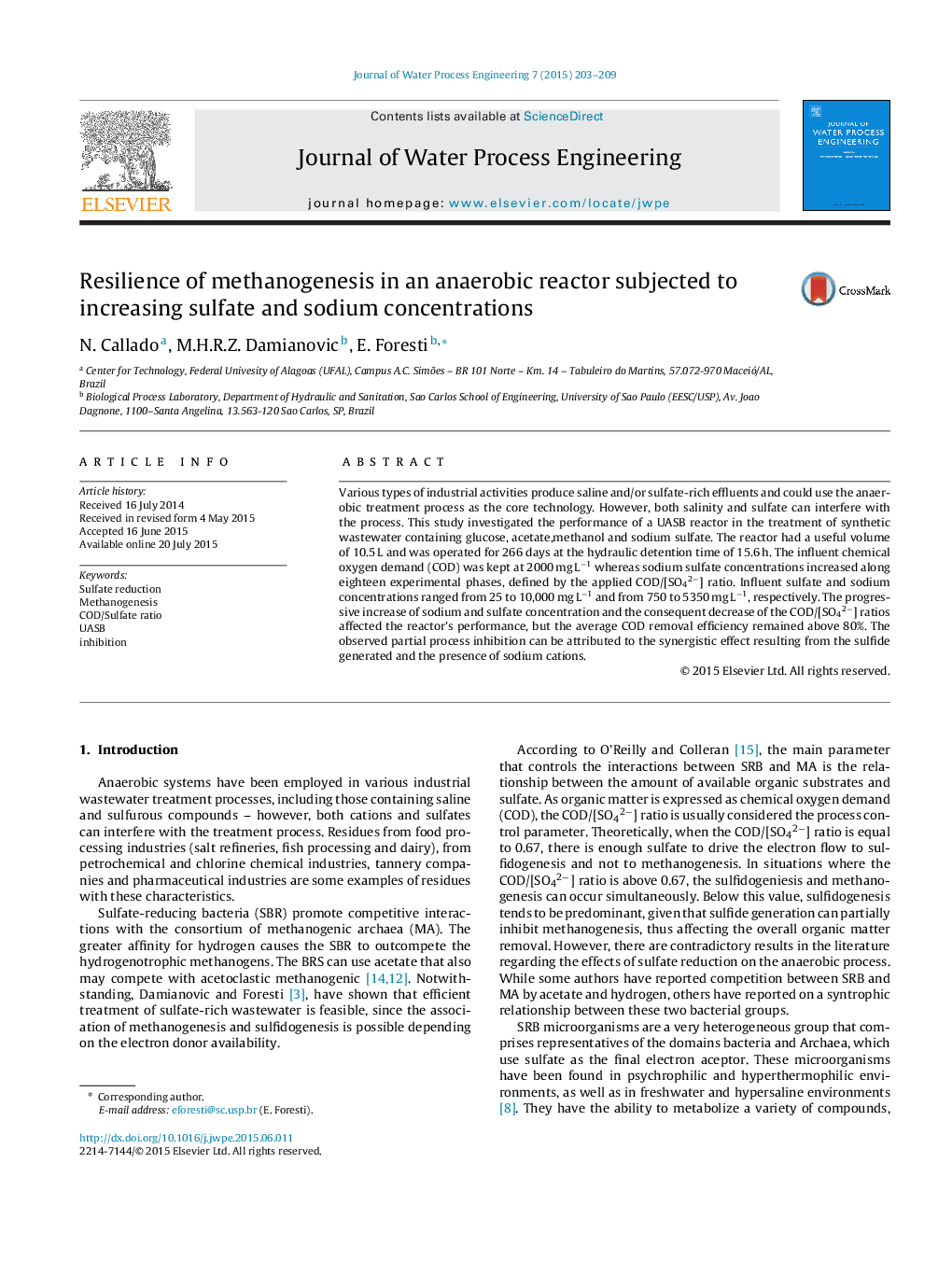| Article ID | Journal | Published Year | Pages | File Type |
|---|---|---|---|---|
| 232616 | Journal of Water Process Engineering | 2015 | 7 Pages |
Various types of industrial activities produce saline and/or sulfate-rich effluents and could use the anaerobic treatment process as the core technology. However, both salinity and sulfate can interfere with the process. This study investigated the performance of a UASB reactor in the treatment of synthetic wastewater containing glucose, acetate,methanol and sodium sulfate. The reactor had a useful volume of 10.5 L and was operated for 266 days at the hydraulic detention time of 15.6 h. The influent chemical oxygen demand (COD) was kept at 2000 mg L−1 whereas sodium sulfate concentrations increased along eighteen experimental phases, defined by the applied COD/[SO42−] ratio. Influent sulfate and sodium concentrations ranged from 25 to 10,000 mg L−1 and from 750 to 5350 mg L−1, respectively. The progressive increase of sodium and sulfate concentration and the consequent decrease of the COD/[SO42−] ratios affected the reactor’s performance, but the average COD removal efficiency remained above 80%. The observed partial process inhibition can be attributed to the synergistic effect resulting from the sulfide generated and the presence of sodium cations.
